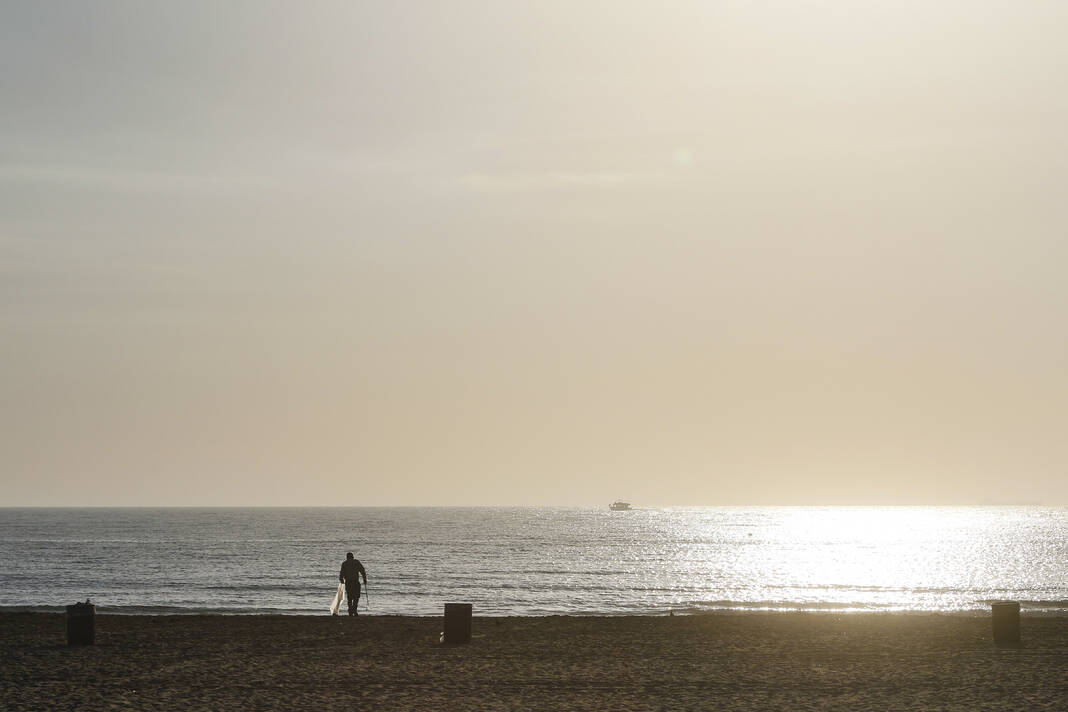|
Only have a minute? Listen instead
Getting your Trinity Audio player ready...
|

Officials with the Texas Parks and Wildlife Department have announced that red tide has recently been detected along the Texas coastline, including at two locations off South Padre Island.
The toxic algae, known as Karenia brevis, was detected in the waters at two city beach accesses last week, according to Tony Reisinger, Cameron County extension agent for coastal and marine resources with Texas Sea Grant.
By Friday, however, water testing returned no trace of the algae cells.
“We tested Friday and we didn’t have any cells off of South Padre. Zero. It zeroed out at the end of last week,” Reisinger said on Monday.
Small amounts of the algae were detected in the waters off the Good Hope Circle Beach Access 21 on the north side of the city, and farther south at the Gulf Circle Beach Access 3.
Two different kinds of the harmful algae were detected in samples pulled last week — Kaernia brevis and Karenia Papilionacaea, so named because its cells resemble butterflies.
“The cells on both of those are called ‘unarmored,’ so they do break up and get picked up by the wind,” Reisinger said.
A swimmer and former Red Tide Ranger — a citizen scientist trained to observe the environment for signs of harmful algal blooms — also reported red tide aerosols while swimming at the southern end of the Island on Friday, though no cells were detected, Reisinger said.
Officials detected low to moderate concentrations of the algae further up the Texas coast, near Freeport and Galveston Bay, as well as a pocket of high concentration in the Houston Ship Channel.
Red tide is also suspected to have caused fish kills consisting of red drum, flounder, spotted sea trout and other fish species along Matagorda and San Antonio bays, according to data published by Texas Parks and Wildlife.
Red tide is a naturally occurring algae that can form algal blooms under the right conditions.
During heavy blooms, dense ribbons of rust can often be seen staining the surf.
With its weak cell walls, wind and wave action can be enough to break the algae’s cells apart, causing them to release a neurotoxin called brevetoxin that can be lethal to fish.
Waves and wind can also cause the neurotoxin to become aerosolized, which in turn, can have a detrimental effect on people and pets — especially those with respiratory conditions, such as asthma.
Exposure to the toxin can cause irritation to the eyes, nose and throat, as well as coughing and sneezing.
South Padre Island has experienced several of the harmful algal blooms in recent years, but perhaps the most significant came in the fall of 2015, when a bloom erupted in late September of that year and persisted through parts of November.
At the time, the irritating algae put a small damper on some of the city’s most highly anticipated fall events, including Sandcastle Days, when artists from across the globe descend on the Island to partake in a sandcastle building competition.
Officials reported isolated fish kills during that bloom, and again during a bloom in the fall of 2016.
However, aside from the one isolated report of aerosols last week, officials have received no other reports of aerosols, fish kills or other detrimental effects thus far, Reisinger said.
Tracking the blooms can be tricky.
“It’s patchy stuff,” Reisinger said, explaining how a red tide bloom may be hyper localized.
“You can’t predict red tide. … The only thing predictable about it is that it’s unpredictable,” he added.
That’s why it’s so important to have citizen scientists willing to volunteer their time.
As a result, in the 1990s, Reisinger founded the Red Tide Rangers, a group of citizen scientists who regularly collect water samples from various locations on the gulf and bay side waters off South Padre Island.
The Rangers can help officials determine where the patches are.
“For people to be able to know where it is and where they can enjoy the beach? That’s extremely important because the economy — especially at South Padre Island — depends on tourism,” Reisinger said.
Reisinger will be training a new crop of Rangers this weekend during a session hosted by the South Texas Border Chapter of the Texas Master Naturalists.
The training will take place on Saturday at the Coastal Studies Lab, 100 Marine Lab Drive, located within Isla Blanca Park. The class will begin at 9 a.m.
Those interested may register via email at [email protected]. Registration is $15 per person and seating is limited to 25.




